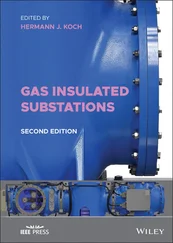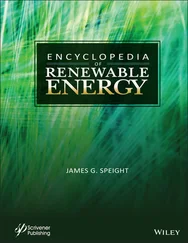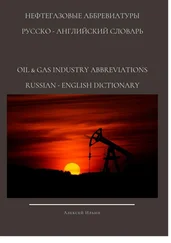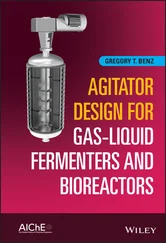In fact, the flexibility of gasification permits to handle any type of refinery residue, including crude oil coke, tank bottoms and refinery sludge and make available a range of value added products including electricity, steam, hydrogen and various chemicals based on synthesis gas chemistry: methanol, ammonia, MTBE, TAME, acetic acid, and formaldehyde (Speight, 2008, Chapter 7). The environmental performance of gasification is unmatched. No other technology processing low-value refinery residues can come close to the emission levels achievable with gasification (Speight, 2014a, 2017).
Gasification is also a method for converting crude oil coke and other refinery non-volatile waste streams (often referred to as refinery residuals and including but not limited to atmospheric residuum, vacuum residuum, visbreaker tar, and deasphalter pitch) into power, steam and hydrogen for use in the production of cleaner transportation fuels. The main requirement for a gasification of carbonaceous feedstocks (including coal and biomass) is that it contains both hydrogen and carbon (Table 2.2, Table 2.3). A number of factors have increased the interest in gasification applications in crude oil refinery operations: (i) coking capacity has increased with the shift to heavier, more sour crude oils being supplied to the refiners, (ii) worldwide coking capacity has increased making sale of high sulfur petcoke more difficult, especially for refineries in the United States, (iii) hazardous waste disposal has become a major issue for refiners, especially in the United States, (iv) pressure to reduce emissions of criteria pollutants and greenhouse gases is increasing, and (v) requirements to produce ultra-low sulfur fuels are increasing the hydrogen needs of the refineries.
Table 2.2Examples of the properties of various resids available for on-site gasification.
| Crude oil resid |
API gravity |
Sulfur % w/w |
Nitrogen % w/w |
Nickel ppm |
Vanadium ppm |
Carbon residue % w/w* |
| Arabian Light >650 oF |
17.7 |
3.0 |
0.2 |
10.0 |
26.0 |
7.5 |
| Arabian Light, >1050 oF |
8.5 |
4.4 |
0.5 |
24.0 |
66.0 |
14.2 |
| Arabian Heavy >650 oF |
11.9 |
4.4 |
0.3 |
27.0 |
103.0 |
14.0 |
| Arabian Heavy >1050 oF |
7.3 |
5.1 |
0.3 |
40.0 |
174.0 |
19.0 |
| Alaska, North Slope >650 oF |
15.2 |
1.6 |
0.4 |
18.0 |
30.0 |
8.5 |
| Alaska, North Slope >1050 oF |
8.2 |
2.2 |
0.6 |
47.0 |
82.0 |
18.0 |
| Lloydminster >650 oF |
10.3 |
4.1 |
0.3 |
65.0 |
141.0 |
12.1 |
| Lloydminster >1050F |
8.5 |
4.4 |
0.6 |
115.0 |
252.0 |
21.4 |
| Kuwait >650 oF |
13.9 |
4.4 |
0.3 |
14.0 |
50.0 |
12.2 |
| Kuwait >1050 oF |
5.5 |
5.5 |
0.4 |
32.0 |
102.0 |
23.1 |
| Tia Juana >650 oF |
17.3 |
1.8 |
0.3 |
25.0 |
185.0 |
9.3 |
| Tia Juana >1050 oF |
7.1 |
2.6 |
0.6 |
64.0 |
450.0 |
21.6 |
*Conradson
The typical gasification system incorporated into the refinery consists of several process plants including the on-site presence of a gasifier, feedstock preparation, an air separation unit, gas cleaning operations, a sulfur recovery unit, and downstream process options depending on the desired products as well as the optional downstream processes for producing power through cogeneration, hydrogen production, and Fischer-Tropsch synthesis ( Chapter 10) (Speight, 2013).
Table 2.3Examples of other refinery feedstocks that are available for on-site gasification.
|
Visbreaker bottoms |
Deasphalter bottoms |
C5 asphaltenes* |
Delayed coke |
| Ultimate Analysis |
| Carbon, % w/w |
83.1 |
85.9 |
80.47 |
88.6 |
| Hydrogen, % w/w |
10.4 |
9.5 |
8.45 |
2.8 |
| Nitrogen, % w/w |
0.6 |
1.4 |
1.25 |
1.1 |
| Sulfur, % w/w * |
2.4 |
2.4 |
1.88 |
7.3 |
| Oxygen, % w/w |
0.5 |
0.5 |
7.95 |
0.0 |
| Ash, % w/w |
<0.5 |
<0.5 |
<0.5 |
<1.0 |
| Specific Gravity |
1.008 |
1.036 |
|
0.863 |
| API Gravity |
8.9 |
5.1 |
|
|
* The use of heptane as the precipitant yields an asphaltene fraction that is different from the pentane-insoluble material as exemplified by differences in the elemental analysis. For example, the H/C ratio of the heptane-asphaltene fraction is lower than the H/C ratio of the pentane asphaltene fraction, indicating a higher degree of aromaticity in the heptane asphaltene fraction. The N/C, O/C, and S/C atomic ratios are usually higher in the heptane asphaltene fraction, indicating higher proportions of the heteroelements in this material. Nevertheless, each fraction is suitable for use as a feedstock for a gasification process.
The benefits of the addition of a gasification system in a refinery to process crude oil coke or other residuals include: (i) production of power, steam, oxygen and nitrogen for refinery use or sale, (ii) source of synthesis gas for hydrogen to be used in refinery operations as well as for the production of low-boiling refinery products through Fischer-Tropsch synthesis, (iii) increased efficiency of power generation, improved air emissions, and reduced waste stream versus combustion of crude oil coke or residues or incineration, (iv) no off-site transportation or storage for crude oil coke or residuals, and (v) the potential to dispose of waste streams including hazardous materials.
Gasification can provide high-purity hydrogen for a variety of uses within the refinery (Speight, 2014a, 2017). Hydrogen is used in refineries to remove sulfur, nitrogen, and other impurities from intermediate to finished product streams and in hydrocracking operations for the conversion of high-boiling distillates and oils into low-boiling products, naphtha, kerosene, and diesel fuel. Hydrocracking and severe hydrotreating require hydrogen which is at least 99% v/v, while less severe hydrotreating can work with gas streams containing 90% v/v pure hydrogen.
Electric power and high-pressure steam can be generated via gasification of crude oil coke and residuals to drive mostly small and intermittent loads such as compressors, blowers, and pumps. Steam can also be used for process heating, steam tracing, partial pressure reduction in fractionation systems, and stripping low-boiling components to stabilize process streams.
Carbon soot is produced during gasification – briefly, soot is a mass of impure carbon particles resulting from the incomplete combustion of hydrocarbons and is more typically a product of the gas-phase combustion process. The soot is transferred to the feedstock by contacting, in sequence, the quench water blowdown with naphtha, and then the naph-tha-soot slurry with a fraction of the feed. The soot mixed with the feed is finally recycled into the gasifier, thus achieving 100% w/w conversion of carbon to gas.
Coke is the residue left by the destructive distillation (thermal cracking) of crude oil residua. That formed in catalytic cracking operations is usually non-recoverable, as it is often irreversibly adsorbed on to the catalyst and is employed as fuel for the process when it is burned from the catalyst. The composition of crude oil coke varies with the source of the crude oil, but in general, large amounts of high-molecular-weight complex hydrocarbon derivatives (rich in carbon but correspondingly poor in hydrogen) make up a high proportion. The solubility of crude oil coke in carbon disulfide has been reported to be as high as 50 to 80%, but this is in fact a misnomer, since the coke is the insoluble, honeycomb material that is the end product of thermal processes.
Читать дальше












